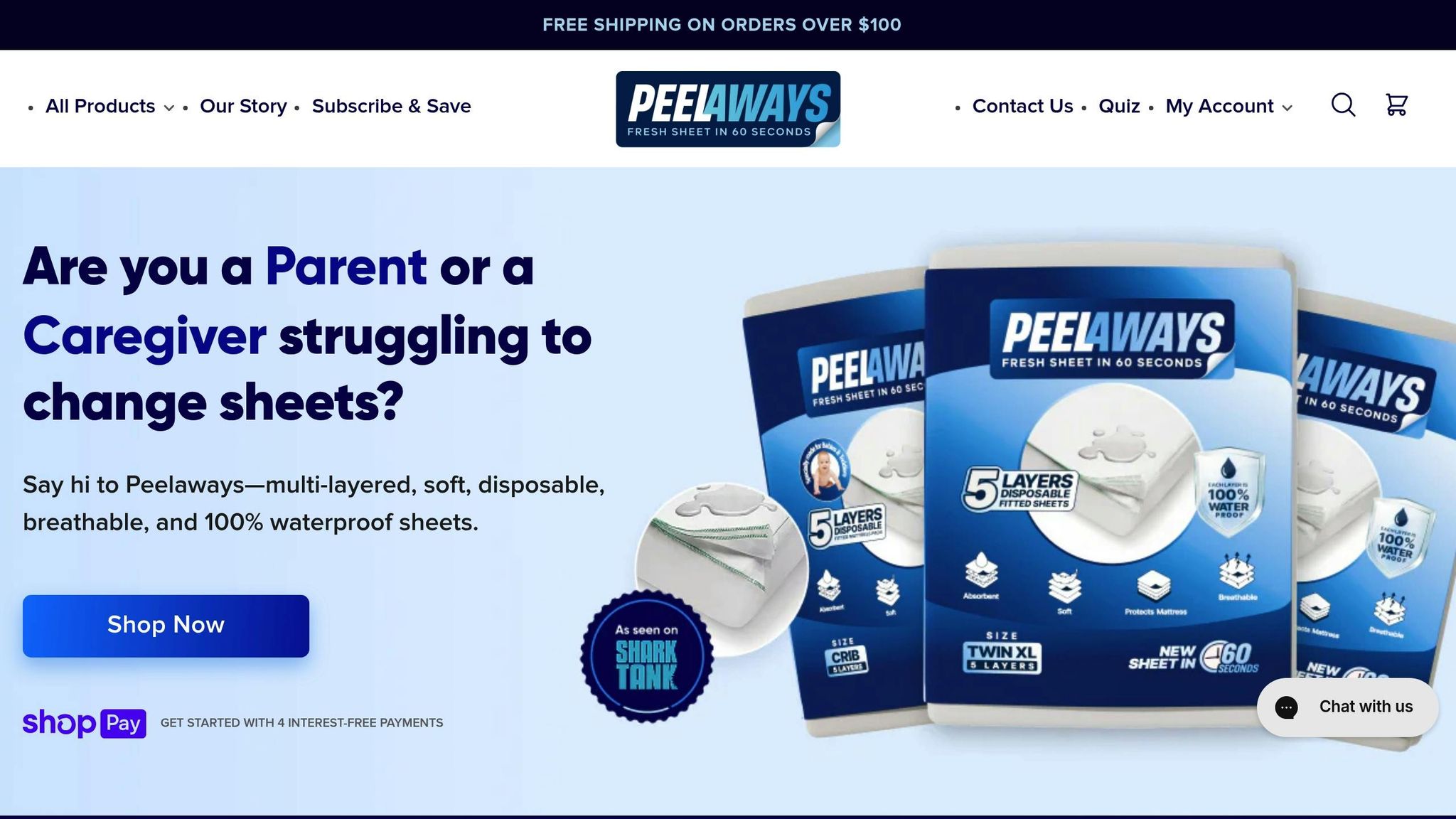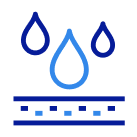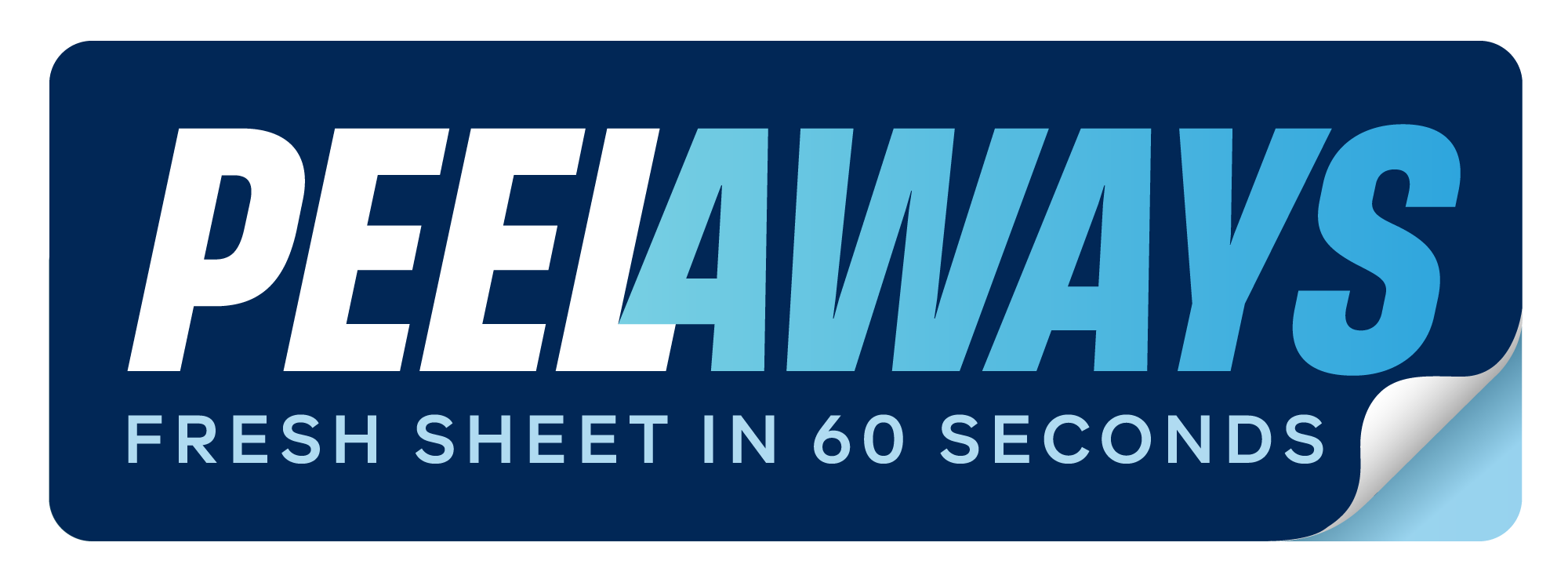Top 5 Bedding Solutions for Incontinence Care

Caring for incontinence can be overwhelming, but the right bedding solutions can simplify daily routines while ensuring comfort and hygiene. Here are five effective options to consider:
- PeelAways Disposable Multi-Layer Sheets: Quick to change, with multiple waterproof layers for convenience and hygiene.
- Fitted Waterproof Mattress Protectors: Durable, reusable covers that shield the entire mattress from moisture.
- Absorbent Bed Pads: Targeted protection for high-risk areas, available in disposable or washable options.
- Quilted Mattress Covers: Comfortable, cushioned protection with a waterproof backing for moderate leaks.
- Waterproof Duvet and Pillow Protectors: Extend moisture protection to duvets and pillows, ensuring a clean sleep environment.
Each solution addresses specific needs, from ease of use to cost and comfort, helping caregivers and families manage incontinence more effectively.
Layering Incontinence Pads Works Best - Here's How!
Quick Comparison
| Solution | Key Features | Best For | Cost |
|---|---|---|---|
| PeelAways Sheets | Multi-layer, waterproof, disposable | Quick changes, infection control | $30.99–$53.99 per pack |
| Fitted Mattress Protectors | Reusable, full mattress coverage | Long-term use, minimal maintenance | $20–$80 |
| Absorbent Bed Pads | Targeted protection, disposable/reusable | Nighttime accidents, travel | $0.30–$1.00 per pad |
| Quilted Mattress Covers | Cushioned, waterproof backing | Moderate leaks, added comfort | $25–$80 |
| Waterproof Duvet/Pillow Covers | Protects duvets/pillows, washable | Comprehensive bedding protection | $10–$50 |
Choosing the right bedding depends on your needs, budget, and care environment. For frequent accidents, disposable multi-layer sheets like PeelAways save time. For lower-cost, reusable options, mattress protectors or quilted covers work well. Pair solutions as needed to balance cost, effort, and protection.
How to Choose the Right Bedding Solutions
Finding the right bedding solutions means considering absorbency, ease of use, comfort, and infection control. The best options not only simplify caregiving but also ensure the comfort and dignity of the person being cared for. Each factor contributes to a smoother experience for both caregivers and care recipients.
Absorbency
Absorbency is a top priority. Bedding must be 100% waterproof and capable of handling significant fluid volumes without leaks. Some products can hold up to 8 cups of liquid, making them ideal for managing heavy incontinence situations [1]. Matching the absorbency level to the specific need is key - lighter cases require less capacity, while heavy leakage calls for maximum protection.
Ease of Use
Ease of use can significantly reduce caregiver strain. Products like multi-layer disposable systems eliminate the hassle of stripping beds or lifting heavy mattresses. These designs not only save time but also cut down on daily laundry loads.
"These have saved my sanity! With 2 incontinent special needs teenagers... these have relieved a lot of stress. They hold a LOT of liquid and are easy to use and tear away. No more 15 loads of laundry and wet mattresses!" - Jalene Stanger
Comfort
Comfort matters just as much. Choose bedding made from soft, breathable materials like cotton or bamboo. Quilted designs enhance airflow and provide a quiet, restful sleep experience. Avoid harsh chemicals such as vinyl, PVC, phthalates, or fire retardants, as they can irritate sensitive skin.
Infection Control
Infection control is critical, especially in environments where multiple people require care. Disposable, multi-layer bedding minimizes cross-contamination risks by allowing soiled layers to be removed and discarded immediately. This reduces exposure to harmful bacteria and keeps the caregiving environment hygienic.
Fit and Sizing
Proper fit ensures reliable protection. Measure mattress dimensions carefully and select products that provide full coverage. For instance, extra-large pads (34 x 54 inches) are ideal for queen or king mattresses. Fitted waterproof protectors help keep bedding securely in place, even during sleep. For individuals with limited mobility, products with reinforced handles can also assist with transfers.
Disposable vs. Reusable Options
Choosing between disposable and reusable bedding impacts both cost and maintenance. Disposable options, like PeelAways, offer convenience and superior infection control but come with recurring costs. Reusable options are more eco-friendly but require frequent washing. Consider how often the bedding will be used, the severity of incontinence, and the time available for laundry when deciding.
Time-Saving Features
Time-saving designs can make caregiving more efficient. Multi-layer sheets that last 7–10 days per layer, with full packs lasting up to 50 days, are practical for ongoing care. These features reduce the need for constant bed changes and laundry, freeing up time for other tasks.
Supporting Independence
Finally, consider solutions that promote independence for the person receiving care. Bedding that allows individuals to manage their own sheet changes helps maintain their dignity and reduces reliance on caregivers, all while ensuring a clean and comfortable environment.
1. PeelAways Disposable Multi-Layer Bed Sheets

PeelAways bring a fresh approach to bedding with their patented multi-layer design. Depending on the mattress size, each set includes 5–7 layers, allowing caregivers to simply peel away a soiled layer to reveal a clean, waterproof sheet underneath. This eliminates the hassle of lifting heavy mattresses, doing endless laundry, and worrying about cross-contamination.
Absorbency and Waterproofing
Each layer of PeelAways is fully waterproof, creating a reliable barrier against heavy leaks. The breathable membrane at the base helps manage airflow, keeping beds cool and dry. Users praise its performance, as one reviewer shared:
"They hold a LOT of liquid and are easy to use and tear away. No more 15 loads of laundry and wet mattresses!" - Jalene Stanger [1]
Ease of Changing and Cleaning
The peel-away design makes changing the bed quick and hassle-free, reducing the process to just a minute. Unlike traditional bedding that requires removal, washing, and drying, PeelAways simplify care with a single peel. This disposable solution is especially handy for overnight incidents, allowing caregivers to restore a clean surface without disturbing the person sleeping. It’s a game-changer for anyone dealing with incontinence-related challenges.
Comfort and Skin-Friendliness
Made from a blend of bamboo, rayon, and polyester, PeelAways deliver the softness of regular sheets while offering durable waterproof protection. The hypoallergenic materials prevent the sticky, plastic-like feel often associated with waterproof bedding. Plus, the breathable design reduces heat buildup, ensuring a comfortable night’s sleep. For those with sensitive skin, keeping the surface dry is essential to avoid irritation. As one satisfied user put it:
"Best product I've ever used! ... They were so easy to use, comfy, and never leaked! Highly recommend!" - Diana L. Magda [1]
This thoughtful balance of comfort and functionality makes PeelAways an excellent choice for incontinence care.
Support for Infection Control and Hygiene
PeelAways stand out for their ability to enhance hygiene. Since each soiled layer is discarded immediately, the risk of cross-contamination is significantly reduced. This feature is especially important in healthcare settings, elder care facilities, and homes where infection control is a priority. With a multi-layer system that can last up to 50 days (each layer lasting 7–10 days under normal use), PeelAways offer a long-lasting solution that traditional bedding simply can’t match. By minimizing cleaning time and contamination risks, they help caregivers maintain a cleaner, more efficient care environment.
PeelAways are available in sizes for all needs, from Crib-A-Peel for toddlers ($30.99) to King size ($53.99), ensuring consistent protection and convenience for any setting.
2. Fitted Waterproof Mattress Protectors
Fitted waterproof mattress protectors are designed to cover the entire mattress, much like a fitted sheet, with elastic corners that keep them securely in place. They’re ideal for managing moderate leakage rather than heavy incontinence. Unlike bed pads that only shield the top surface, these protectors wrap around the entire mattress, offering a more comprehensive defense against moisture. They work well alongside other protective products to ensure the mattress stays dry.
Absorbency and Waterproofing
These protectors excel at creating a barrier against fluids, thanks to a polyurethane or vinyl backing that makes them completely waterproof. While their main job is to block liquids rather than soak them up, some models include an absorbent layer to trap moisture and prevent pooling. However, their absorbency is less than that of dedicated absorbent pads, so they’re best paired with other products for heavy incontinence needs [2].
Modern designs have moved away from the stiff, plastic feel of older models. Today’s protectors use soft, breathable materials for a more comfortable and quiet sleeping experience [5].
Ease of Changing and Cleaning
The elasticized corners make it easy to remove and replace the protector without the hassle of lifting the mattress. Plus, they’re machine washable and built to withstand more than 300 wash cycles. Many high-quality models are also stain-resistant, helping to keep them looking clean between washes. When cared for properly, they’re a cost-effective option that lasts over time [4].
Comfort and Skin-Friendliness
These protectors are made with soft, hypoallergenic fabrics that wick away moisture, ensuring a comfortable night’s sleep. Their breathable design prevents heat buildup, which is especially beneficial for those with sensitive skin. Despite being waterproof, they maintain a quiet and soft texture, avoiding the discomfort associated with older designs [6].
Support for Infection Control and Hygiene
By keeping fluids from soaking into the mattress, these protectors help prevent bacterial growth, mold, and unpleasant odors, creating a cleaner and healthier sleeping environment. This makes them particularly useful in healthcare and elder care settings [2]. They can also be sanitized through high-temperature washing, ensuring proper hygiene between uses.
Prices typically range from $20 to $60, with premium king-size options reaching around $80. These protectors are available in all standard U.S. mattress sizes, including Twin, Full, Queen, King, and specialty sizes like Twin XL.
sbb-itb-45288fe
3. Absorbent Bed Pads
Absorbent bed pads are placed directly on top of your mattress or sheets, acting as a barrier to catch fluids before they reach the layers below. They come in both disposable and reusable types, with multi-layer designs that effectively trap moisture. This helps keep the bed clean and cuts down on frequent sheet changes[4][7].
Unlike fitted protectors, bed pads provide targeted coverage, focusing on areas most likely to experience accidents. This makes them especially practical for caregivers managing nighttime care routines.
Absorbency and Waterproofing
Bed pads work well alongside other bedding solutions, offering focused and dependable protection. For instance, high-capacity options like PharMeDoc pads can hold up to 8 cups of liquid, making them suitable for moderate to heavy incontinence[4]. For more intensive needs, Medline Ultrasorbs deliver hospital-grade absorbency, ensuring reliable overnight protection[4][2]. Many pads feature waterproof backings, often made from PVC, to prevent leaks. Extra-large sizes are also available for broader coverage, accommodating larger beds[4].
Ease of Changing and Cleaning
Disposable bed pads are easy to replace, requiring no laundry, which is a big plus for busy caregivers or situations where washing facilities are unavailable[4][2]. Reusable options, such as PharMeDoc pads, are built for durability and can withstand over 300 washes. Many of these reusable pads also come with non-slip backings and reinforced handles, making them easier to handle and secure. Additionally, darker colors or patterns can help conceal stains between washes[4].
Comfort and Skin-Friendliness
Modern bed pads are designed with comfort in mind. Quilted surfaces are gentle on the skin, while breathable materials like cotton and bamboo - such as the Kelisiting washable bed pad - help regulate body temperature and reduce sweating[4][7]. Some advanced pads even include hydrophobic layers that wick moisture away from the skin, keeping users dry and lowering the risk of skin irritation or breakdown[7].
Support for Infection Control and Hygiene
By capturing moisture and preventing leaks, bed pads play a key role in maintaining a dry sleeping surface, which is essential for reducing the risk of skin infections and pressure sores[4][7]. Disposable pads are especially helpful in minimizing cross-contamination since they can be discarded immediately after use[4][2]. Reusable pads, while requiring thorough washing, feature waterproof backings that stop urine from seeping into the mattress, helping to limit bacterial growth and odors[4][2].
Available in sizes ranging from crib to king, including extra-large options, absorbent bed pads are a vital part of any incontinence care plan. Their versatility and practicality make them an invaluable tool for maintaining cleanliness and comfort.
4. Quilted Mattress Covers
Quilted mattress covers offer a practical and comfortable solution for long-term mattress protection. Designed with a quilted top, an absorbent middle layer, and a waterproof backing, they strike a balance between durability and comfort. These covers are especially popular in healthcare facilities and home care settings where both qualities are crucial. They also work well alongside other bedding solutions to provide added protection.
Absorbency and Waterproofing
Quilted mattress covers are great at handling small to moderate leaks, though they aren't ideal for heavy incontinence. The quilted top layer pulls moisture away from the skin, while the waterproof backing - often made from polyurethane - keeps fluids from seeping into the mattress. A good example is the SaniSnooze Moon Waterproof Incontinence Mattress, which combines absorbent and waterproof layers to deliver reliable protection [8]. For added security, caregivers often pair quilted covers with absorbent bed pads to manage more severe incontinence issues.
Ease of Changing and Cleaning
These covers are usually machine-washable and designed with secure fittings to stay in place, reducing the need for constant adjustments during the night. While they require more maintenance than disposable options, their reusability makes them a cost-effective choice. With proper care, many quilted covers can endure hundreds of wash cycles, offering long-term savings.
Comfort and Skin-Friendliness
The quilted design provides a soft, cushioned surface that enhances comfort, especially for individuals who spend extended periods in bed. Many of these covers are made with hypoallergenic and breathable materials to minimize skin irritation and overheating. The moisture-wicking top layer helps keep the skin dry, which is particularly important for those with sensitive skin or conditions that make them prone to pressure sores. Compared to standard waterproof protectors, quilted covers offer a more pleasant and skin-friendly sleeping experience.
Support for Infection Control and Hygiene
Quilted covers act as a waterproof barrier, preventing bodily fluids from penetrating the mattress. They can be easily cleaned through machine washing or wiped down as needed, which helps maintain hygiene and reduce bacterial growth. In healthcare settings, combining quilted covers with disposable pads creates an extra layer of protection, aligning with infection control protocols [2]. Regular laundering and timely replacement of worn covers are essential for maintaining cleanliness. Many high-quality options even come with warranties of up to 10 years, providing peace of mind regarding their durability and effectiveness.
Quilted mattress covers are available in all standard U.S. sizes, from Twin to King. Prices typically range from $25 to $60, with premium options - such as those made from organic or specialty materials - costing up to $80 or more. Their reusable nature makes them an economical choice for managing incontinence over time.
5. Waterproof Duvet and Pillow Protectors
Waterproof duvet and pillow protectors extend the protection of your bedding, offering a reliable barrier against fluids. Building on the concept of mattress protectors, these covers shield duvets and pillows with a waterproof layer that blocks liquids while still allowing airflow. Designed for use in both healthcare and home settings, they play a key role in maintaining cleanliness and comfort, especially in cases of incontinence.
Absorbency and Waterproofing
Although these protectors aren't absorbent themselves, they excel at preventing fluids from penetrating to the bedding underneath. The waterproof membrane completely blocks moisture while allowing air to circulate, helping to regulate temperature. Modern options have moved past the noisy, crinkly feel of older vinyl covers, offering a quieter, more discreet user experience. Many designs also include zippered closures, which fully encase the bedding to reduce the chance of leaks.
Ease of Changing and Cleaning
Like other protective bedding solutions, these covers are straightforward to manage. Most waterproof duvet and pillow protectors are machine washable and safe for the dryer, making them easy to clean and reuse. Some users report that laundry loads can decrease by as much as 90% with their use [3]. Having extra protectors on hand ensures quick bedding changes when needed, and following care instructions helps maintain the waterproof barrier over time.
Comfort and Skin-Friendliness
High-quality protectors are designed with comfort in mind. Many feature soft outer layers made of cotton terry or microfiber, which sit atop the waterproof barrier to prevent skin irritation and promote better sleep. Additionally, many are hypoallergenic, offering protection against dust mites and allergens - a helpful feature for individuals with sensitive skin or respiratory issues. The breathable design also helps maintain a comfortable sleeping temperature.
Support for Infection Control and Hygiene
These protectors are an effective tool for maintaining hygiene and reducing the risk of cross-contamination. By preventing bodily fluids from soaking into the bedding, they help limit bacterial growth and create a cleaner sleep environment. In healthcare settings, their ability to be sanitized easily makes them a valuable part of infection control protocols.
Duvet protectors typically cost between $20 and $50, while pillow protectors range from $10 to $25 per pair [3]. They are available in all standard U.S. bedding sizes, including Twin, Full, Queen, and King. Many products are highly rated on retail platforms, often earning 4.5 out of 5 stars. For complete bedding protection, pairing these covers with other absorbent products like bed pads or multi-layer disposable sheets is a practical option.
Product Comparison Table
Choosing the right bedding solution for incontinence care can feel overwhelming, but breaking it down by key factors - like protective layers, ease of use, cost, and comfort - can simplify the decision. The table below compares five popular bedding solutions to help caregivers weigh their options effectively.
| Bedding Solution | Protective Layers | Ease of Change | Cost per Use | Comfort Level | Best Care Settings |
|---|---|---|---|---|---|
| PeelAways Disposable Sheets | 5–7 waterproof layers | Quick (<60 seconds) | $0.60–$1.00 per layer | Soft, breathable, noiseless | Home, hospital, elder care, special needs |
| Fitted Waterproof Mattress Protectors | Single waterproof barrier | Moderate (requires washing) | Low (reusable, $20–$60 initial) | Varies (can be hot or noisy) | Home, long-term care |
| Absorbent Bed Pads | Single absorbent layer | Very easy (lift and replace) | $0.30–$1.00 per pad (disposable) | Can bunch up, less comfortable | Home, hospital, travel |
| Quilted Mattress Covers | Padded surface with waterproof backing | Moderate (requires washing) | Low (reusable, $30–$80 initial) | Soft, padded comfort | Home, long-term care |
| Waterproof Duvet/Pillow Protectors | Single waterproof barrier | Moderate (requires washing) | Low (reusable, $10–$40 initial) | Varies by material quality | Home, hospital |
Key Performance Insights
Looking at the table, PeelAways stand out with their 5–7 independent waterproof layers, which allow for quick changes without removing the mattress. Each layer is designed to prevent liquid from seeping through, offering unmatched convenience for caregivers.
Reusable options, like fitted mattress protectors and quilted covers, are appealing for their lower long-term costs but do require more effort for washing and drying. According to the National Association for Continence (NAFC), combining washable and disposable layers can provide extra protection while keeping cleanup manageable [2].
Cost Analysis by Care Setting
For high-turnover environments, such as hospitals, PeelAways' cost per layer ($0.60–$1.00) can be offset by savings in laundry and staff time. A single pack of PeelAways typically lasts around 50 days, with each layer lasting 7–10 days depending on usage.
In home care, where accidents may occur less frequently, combining reusable bedding with disposable pads can be a cost-effective strategy. However, for caregivers managing daily incontinence, the convenience and time savings offered by PeelAways often justify their higher cost per use.
Comfort and User Experience
Comfort is just as critical as cost, and PeelAways excel in this area. Customers praise their soft, breathable design made from bamboo, rayon, and polyester. Unlike traditional waterproof protectors, which can be noisy or trap heat, PeelAways maintain a quiet, comfortable sleeping environment.
They’re also hypoallergenic and free from chemicals like vinyl, PVC, phthalates, and fire retardants, making them ideal for individuals with sensitive skin or respiratory issues.
Setting-Specific Recommendations
Hospitals and clinics benefit greatly from PeelAways' quick-change design and enhanced infection control. Elder care facilities report noticeable reductions in laundry and staff workload when switching to disposable multi-layer sheets. For home caregivers, especially those managing special needs or potty training, PeelAways' convenience can significantly reduce stress.
For those on a tighter budget, pairing a reusable fitted mattress protector ($20–$60) with disposable bed pads ($0.30–$1.00 each) offers solid protection at a lower ongoing cost, though it does require more maintenance.
Conclusion
Choosing the right bedding solution for incontinence care can make caregiving easier and more efficient. By tailoring the product to your specific needs, care environment, and budget, you can simplify daily routines and improve the caregiving experience for families across the United States.
PeelAways disposable multi-layer bed sheets have earned high praise from users, with caregivers noting the significant time saved and the reduction in laundry. Their soft, waterproof design not only protects against leaks but also reduces the risk of cross-contamination. Plus, they’re breathable and free of harsh chemicals, making them a great choice for sensitive skin.
For families watching their budgets, a mix of reusable and disposable bedding can provide effective care, though it may require a bit more upkeep. The key is to regularly evaluate your setup to ensure it meets current needs and make adjustments as those needs change.
Whether you’re caring for an elderly loved one or someone with special needs, high-quality incontinence bedding can make daily life smoother while maintaining dignity for everyone involved. With options like Crib-A-Peel starting at $30.99 and available in a range of sizes, investing in the right bedding can truly enhance the quality of life for both caregivers and those they care for.
FAQs
What should I look for in bedding solutions for incontinence care?
When choosing bedding for incontinence care, the key is to prioritize ease of use, protection, and comfort. Opt for bedding that is waterproof, simple to clean, and designed to reduce the workload for caregivers. For instance, multi-layer disposable sheets can make cleanup much easier - just peel off a soiled layer, and a fresh one is ready to use.
Peelaways provides an excellent option with their soft, breathable, and waterproof sheets. They come in a range of sizes, including Crib, Twin, Full, Queen, and King. These sheets remove the hassle of lifting mattresses or dealing with laundry, making them a great choice for elder care, potty training, or medical recovery.
Why are Peelaways disposable multi-layer sheets a cost-effective and convenient choice for home caregivers?
Peelaways disposable multi-layer sheets provide an easy and convenient option for caregivers. Thanks to their clever peel-away design, you can simply remove a soiled layer to instantly reveal a clean sheet beneath - no need for heavy lifting or constant laundry cycles.
This approach not only cuts down on time and effort but also helps lower water and energy expenses tied to washing traditional bedding. Popular among caregivers and families alike, Peelaways are a practical and budget-friendly choice for incontinence care, potty training, elder care, and beyond.
Are quilted mattress covers enough for managing heavy incontinence, or should they be paired with other bedding solutions?
Quilted mattress covers can offer some level of protection, but they often fall short when it comes to handling heavy incontinence. A more practical and efficient option is multi-layered, disposable, waterproof sheets like Peelaways. These sheets are built with several soft, absorbent layers that you can peel away one by one when they become soiled, instantly revealing a fresh, clean layer.
This design eliminates the hassle of constantly lifting mattresses or doing extra laundry, making them a great choice for caregivers and families managing heavy incontinence. Peelaways provide dependable protection, help minimize cross-contamination, and come in various sizes to fit different types of beds.
Related Blog Posts
- Why Organic Waterproof Bedding Matters for Incontinence Care
- How to Choose Bedding for Incontinence Care
- Comfort and Dignity in Incontinence Bedding Solutions
- How to Keep Beds Dry During Incontinence Care
Comments
0

SAVE MONEY & WATER
Professionals & Institutions save a fortune on labor/laundry.

SUPERIOR COMFORT
The first thing our customers notice is how soft our sheets are.

100% WATERPROOF
Each layer is 100% Waterproof, perfect for spills and accidents

SAVE TIME
Change the sheet in under 1 minute without stripping the bed.




Leave a comment